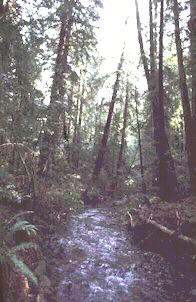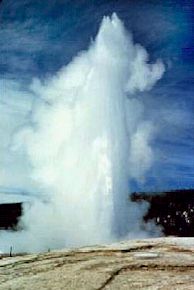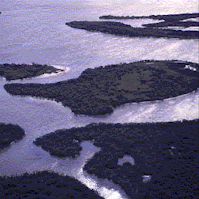By Cat Lazaroff
Environment News Service
 Muir Woods in Northern California is dedicated to enviornmentalist John Muir, who along with President Theodore Roosevelt is credited with helping save America's natural wonders Muir Woods in Northern California is dedicated to enviornmentalist John Muir, who along with President Theodore Roosevelt is credited with helping save America's natural wonders
Photo: National Parks Service |
WASHINGTON, DC (ENS) - The 20th century may be remembered as a period of great environmental devastation. Yet this century will also be remembered as the time when the United States realized the importance of protecting nature and took major steps to do so, according to some of the nation's largest environmental groups.
An environmental review of the United States in the 20th century shows both gains and losses, according to the Wilderness Society, Friends of the Earth and the Sierra Club. All three groups have released lists of their picks for the most important environmental milestones of the century, agreeing on the major points.
|
"During the last 100 years, Americans have made much progress protecting our environment, but nature has also been destroyed on an astonishing scale," says Sierra Club executive director Carl Pope.
"Future generations will honor those 20th century Americans who had the vision and the tenacity to protect some of our most spectacular forests, coastlines, mountains, and canyonlands," agrees Wilderness Society president William Meadows.
"Americans' awareness of environmental problems has greatly improved over the past 50 years," says Friends of the Earth president Dr. Brent Blackwelder, president. "In the United States, strong environmental organizations have emerged, a phenomenon that is being replicated throughout the world as thousands of grassroots groups are forming to protect their water, air, and land from degradation."
The Sierra Club took a look at the top environmental champions, images and victories of the 20th century. The group also points to eight 20th century inventions that they feel are making life worse for Americans, and highlights five "bold new ideas" for the next century.
|
"One of the most profound changes that has occurred in the 20th century has been the inception and blossoming of the environmental movement," says Pope. "Protecting clean air, clean water and the beautiful places that inspire us has grown from an idea in the minds of pioneers like John Muir and Theodore Roosevelt to become a guiding ethic for our society."
The Sierra Club’s top 12 environmental victories of the last century: |
 Mount Rushmore National Park honoring presidents George Washington, Thomas Jefferson, Theodore Roosevelt and Abraham Lincoln. Mount Rushmore National Park honoring presidents George Washington, Thomas Jefferson, Theodore Roosevelt and Abraham Lincoln.
Photo: National Parks Service |
- Protecting over 100 million acres of federal Wilderness, over 100 million acres of Alaska in 1980 as new parks, wilderness areas and refuges, and over 80 million acres as National Parks
- Banning DDT, lead in gasoline, and other harmful toxic pollutants
- Adopting national and international programs to protect and recover endangered species
- Starting the process of dismantling environmentally destructive dams
- Requiring all federal actions to be considered for their environmental consequences
- Cleaning up America's air, an action which has reduced the number
of days Los Angeles residents breathe dirty air by 75 percent
- Cleaning up two-thirds of America's rivers and lakes
- Placing Antarctica off-limits to commercial exploitation
- Adopting an international ban on commercial whaling
- Passing the Montreal Protocol to ban chlorofluorocarbons (CFCs)
- Halting the proliferation of nuclear weapons
- Exporting the National Park idea to every continent and major nation
The Wilderness Society’s list concentrates on the nation’s 12 most significant land protection actions.
In making its choices, the Society weighed the acreage affected, the type of land involved and the breadth of the action’s impact.
 Old Faithful in Yellowstone National Park Old Faithful in Yellowstone National Park
Photo: National Parks Service |
"Leaders in the late 19th century took some notable steps," Meadows points out. "They set aside Yellowstone and Yosemite and created the first national forests. But it was really the 20th century when land protection became a major force and won support from a large majority of Americans. The days of looking upon land in its natural condition as a waste or as something to be conquered are now behind us."
The Wilderness Society's list of the dozen most significant land protection actions of the 20th century, in chronological order:
|
-
creation of the first national wildlife refuge, Pelican Island National Wildlife Refuge, along Florida's central Atlantic coast (1903)
- passage of the Antiquities Act (1906)
- passage of the Weeks Act (1911)
- creation of the National Park Service and a standard for managing the parks (1916)
- defeat of Echo Park Dam (1956)
- passage of the Wilderness Act (1964)
- passage of the Land and Water Conservation Act (1964)
- the first Earth Day (1970)
- passage of the National Environmental Policy Act (1970)
- passage of the Endangered Species Act (1973)
- passage of the National Forest Management Act (1976)
- passage of the Alaska Lands Act (1980)
Additional landmarks this century, the Wilderness Society says, include the California Desert Protection Act (1994), the Federal Land Policy and Management Act (1976), and the early century forest protection engineered by President Theodore Roosevelt.
Environmental laws rank fourth on the Friends of the Earth’s list of the century’s big environmental gains, under increased environmental awareness, land and water protection, and wildlife conservation.
"The increase in protected lands and waters has been especially noteworthy: new national parks have been set aside, a wilderness system now embracing 77 million acres has been put in place, a wild and scenic rivers system to preserve over 150 rivers with outstanding natural values is now operational," says Blackwelder. "State and private initiatives have contributed further to the conservation of nature. The heavily logged eastern forests have made a significant comeback."
Blackwelder fills out his list of seven positives with pollution clean up; more open government, as represented by the Freedom of Information Act and National Environmental Policy Act; and energy conservation.
"Public pressure and pollution laws have brought about major reductions in pollution and have cleaned up some of the worst examples of abuse," Blackwelder notes, "a dead Lake Erie, a river that caught on fire - the Cuyahoga - and the Potomac, which was a virtual summertime sewer in the 1960s."
"The reduction of energy use through more efficient motors, lights, and appliances eliminated substantial pollution and is currently saving Americans over $100 billion annually and has shown how an industrialized economy can run on a more environmentally sustainable basis," he says.
But Blackwelder cites many 20th century environmental failures. "We end the century poised to eliminate one fourth of the species on earth, and to erase some of the most important conservation achievements of the last thirty years," he says. "Gains in protecting areas of special beauty and wildlife could be reversed if global climate change transforms the earth's vegetation in the next century."
Friends of the Earth lists 11 areas which president Blackwelder calls America’s biggest failures and resource losses:
-
Nuclear Power: "Nuclear accidents stand out among the major environmental catastrophes of the 20th century," says Blackwelder. "Despite being deluged with U.S. government subsidies, the nuclear power industry never managed to solve the fundamental problems of cost, safe operation, radioactive waste disposal, and nuclear proliferation through theft and terrorism."

- Interstate Highways: "The interstate highway system destroyed rail passenger service in the United States, harmed rail freight operations, and has been the engine of sprawl and the destruction of open space around major cities," he argues. "The transformation has left our nation at the end of the century with an energy wasting, sprawl inducing, congested fiasco that every 20 years kills more people than the U.S. lost in both World Wars."
-
Air and Water Pollution: "Despite the goals of the 1970 Clean Air Act and the 1972 Clean Water Act, 40 percent of U.S. waters are not fit for swimming or fishing, 100 million Americans breathe unhealthy air, and groundwater contamination is seriously threatening our supply of drinking water," Blackwelder says.
-
Climate Change: "Over 2,200 scientists in the U.S and abroad have concluded that climate change is occurring," says Blackwelder. "It threatens to undermine ecosystems worldwide and cause massive economic disruption and human dislocation."
-
New Pollution: "Spectacular pollution of a highly grotesque and destructive nature has emerged in two areas at the close of the century," Blackwelder says. "Massive mountaintop removal of coal in Appalachia - the tops of mountains are literally being blasted away and the rubble dumped in streams and valleys. And filthy industrial pig and chicken factory operations, which are fouling the rivers and coasts, killing millions of fish, filling rural counties with intolerable stench, and destroying family farms in the process."
- River Destruction: "Most of our great rivers have been dammed, dredged and diverted, in addition to being polluted. Hundreds of gigantic dams built by the Army Corps of Engineers, Bureau of Reclamation, Tennessee Valley Authority (TVA) and others have prevented fish passage, drowned prime farmland and rural communities, inundated scenic canyons, and wiped out areas of special biological value and scientific importance," says Blackwelder. "Now these dams clog rivers and act like giant doses of cholesterol in the arteries and veins of our nation's streams and waterways."
-
Exotic Species: "Some of the biggest environmental losses have come with the import and invasions of non-native species like the Gypsy moth, zebra mussel, chestnut blight, Dutch elm disease, and Asian long-horned beetle, to name a few," he says. "Once these diseases and exotic plants and animals have gained a foothold, they are almost impossible to get rid of. They have devastated ecosystems by wiping out native plants and animals and are causing over $100 billion in annual economic damage."
- Chemical Nightmare: "Rachel Carson warned the nation about the dangers of pesticides, but we are closing the century with vastly greater quantities of chemicals being used than in her day," warns Blackwelder. "Furthermore, the consequences of living in a new world of chemical pollution are not really understood. Beyond the concerns about cancer are new worries about the potential of chemicals to disrupt endocrine systems and hormonal balances. Synergistic effects are not properly being analyzed."
 -
Population Explosion: "As the world's population crosses the six billion mark, space for other species is rapidly diminishing. No current social or environmental problems are rendered easier to solve by having more people on the planet," Blackwelder argues. "Excessive consumption by northern countries and failure to empower women have driven and compounded the population problem."
- Species Loss: "Despite gains in wildlife protection, habitat destruction and fragmentation have put the majority of bird species on earth in decline," he notes. "Over 40 percent of the freshwater fish species in America are now threatened."
- The Legacy of War: "The environmental legacy of war is enormous and not fully understood. Beyond the immeasurable personal tragedies with the destruction of human life, there are painful consequences to those who must live on the devastated land," Blackwelder concludes. "The Vietnam War deforested one third of the country's tropical rainforests, and left the chemical legacy of Agent Orange as well as thousands of unexploded land mines that continue to kill and maim rural people. The Persian Gulf War resulted in the world's largest oil spills on land, sea, and in the air."
As the the year 2000 begins, there are more species in danger of extinction now than at any time in the history of the nation, the Environmental Defense Fund (EDF), says. The last century began as a time of crisis for many U.S. species, but some have staged spectacular comebacks, like the gray wolf, northern elephant seal, and whooping crane. A few species have even become too successful and are now a nuisance, like the white-tailed deer and brown-headed cowbird.
But at the start of the new millennium, some species are still in serious peril, like the Snake River sockeye and po'ouli, a Hawaiian songbird. Others like the bobolink, black-tailed prairie dog, and longleaf pine tree are fast declining.
|
Overexploitation was the major threat to species at the beginning of the last century, but that threat has been replaced by three far more ruthless and indiscriminate killers: habitat destruction, alien species, and pollution. "Wildlife in the U.S. is in a greater state of crisis now than at any since the Ice Age," said David Wilcove, an EDF ecologist and author of "The Condor's Shadow, The Loss and Recovery of Wildlife in America."
|
 Canaveral National Seashore in Central Florida Canaveral National Seashore in Central Florida
Photo: National Parks Service |
In greatest peril according to the EDF's list, is the longleaf pine ecosystem which has been so damaged and degraded that dozens of species inhabiting this ecosystem are in danger of extinction. Longleaf pine once covered 74 million acres in the southeastern U.S. from Virginia south through Florida to Texas. These forests were severely damaged by settlers, who destroyed the trees for tar, pitch, rosin, and turpentine, as well as logging them for timber. The suppression of natural fire caused the remaining acreage of longleaf to become overgrown with hardwoods.
While saluting the many conservation milestones of the past 100 years, the Wilderness Society's Meadows also acknowledges that the country also did much to harm the land. The 20th century will also be remembered for urban sprawl, species loss due to habitat destruction, and ecological nightmares such as the diking and ditching of the Everglades. "But I believe we have learned from our mistakes," Meadows says. "For example, we now understand that swamps help clean our water and that human welfare depends on biological diversity."
"Sadly, conservationists must spend a lot of time trying to prevent special interests from poking holes in the laws that stand out as the century’s environmental landmarks," says Meadows. "The Antiquities Act and the Endangered Species Act are under constant attack by powerful members of Congress. Efforts to add lands to the National Wilderness Preservation System face a series of roadblocks. Only a third of the money in the Land and Water Conservation Fund has been used over the past 20 years. As we prepare for the 20th anniversary of the Alaska Lands Act, that state’s congressional delegation is seeking to weaken it. Stacks of public opinion surveys prove that the American people want greater protection of their land - not weaker."
Meadows notes the bipartisan character of 20th century land protection. "Theodore Roosevelt gets the credit for the first national wildlife refuge," he says, "and of the eight actions on our list that were federal initiatives, four were signed by Republican presidents and four by Democratic ones. We need bipartisan leadership if we are to do right by future generations.
Meadows voices the thoughts of many conservationists, saying, "As we cross over into the next century, we should commit ourselves to saving a national network of wildlands that will always be there for the American people."
Environment News Service: http://www.ens-news.com
|




 Muir Woods in Northern California is dedicated to enviornmentalist John Muir, who along with President Theodore Roosevelt is credited with helping save America's natural wonders
Muir Woods in Northern California is dedicated to enviornmentalist John Muir, who along with President Theodore Roosevelt is credited with helping save America's natural wonders  Mount Rushmore National Park honoring presidents George Washington, Thomas Jefferson, Theodore Roosevelt and Abraham Lincoln.
Mount Rushmore National Park honoring presidents George Washington, Thomas Jefferson, Theodore Roosevelt and Abraham Lincoln. Old Faithful in Yellowstone National Park
Old Faithful in Yellowstone National Park 

 Canaveral National Seashore in Central Florida
Canaveral National Seashore in Central Florida